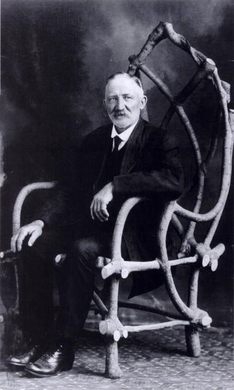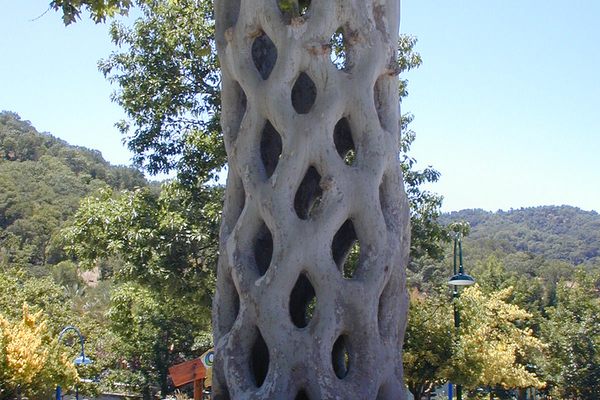The Chair That Grew
A 100-year-old chair with joints "cemented by nature."
John Krubsack was a self-starter. A banker from Embarrass, Wisconsin, he was the first in the area to boast running water, he landscaped his property before it was the fashion, he farmed and made cheese, and he loved collecting nice branches with which to make furniture.
One day in 1903, a friend admired a beechwood chair Krubsack had crafted, complimenting him on his handicraft. A man who perhaps didn’t know how to take a compliment, Krubsack announced, “Dammit, one of these days I am going to grow a piece of furniture that will be better and stronger than any human hands can build.”
That someday came in 1907 with Krusback planting 32 box elder trees in his back yard. Fascinated by what would come of the experiment, Krusback began grafting and bending the tree stems and branches into the shape of a chair. After 11 years, with periodic help from Krubsack, every joint in the chair was strong, or as Krubsack said, “cemented by nature.” The chair was ready to be harvested.
Dubbed “The Chair That Grew,” this curious piece of furniture was exhibited at the 1915 World’s Fair, appeared in Ripley’s Believe It or Not column, and was featured in a film with Krubsack explaining how it was made, which ran in the weekly newsreels in movie theaters across the country.
Though many handsome offers were made for the famous chair, Krubsack refused to sell, eventually leaving it to his nephew to be displayed in his furniture store.
“The Chair That Grew” was last seen at the entrance of Noritage Furniture, owned by Krubsack’s descendants, Steve and Dennis Krubsack. The store closed in 2007.
Know Before You Go
The Chair That Grew is held privately by the Krubsack family, and no longer on public view.


















Follow us on Twitter to get the latest on the world's hidden wonders.
Like us on Facebook to get the latest on the world's hidden wonders.
Follow us on Twitter Like us on Facebook